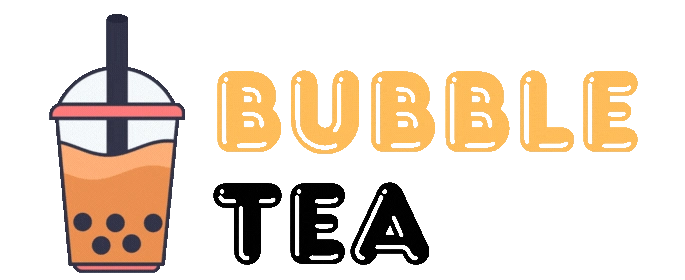

If you've ever wandered into a café and seen people joyfully sipping colorful drinks with chewy black pearls at the bottom, congratulations—you've witnessed the magic of bubble tea. Often referred to as boba tea, this playful beverage is more than just a sweet treat; it's a global cultural phenomenon powered by one small but mighty ingredient: tapioca pearls.
Let’s dive deep (straw first) into the delightful world of tapioca pearls and their bubbly companion, bubble tea. From its fascinating origins and ever-growing flavor palette to the role it plays in social trends and business ventures, this is your ultimate guide to one of the most fun beverages ever shaken, stirred, and slurped.
Bubble tea didn’t just appear out of thin air—or frothy milk, for that matter. This delightfully chewy drink was born in Taiwan during the 1980s. As the story goes, local tea shops were experimenting with adding different toppings to iced tea. Someone had the bright idea of combining sweetened milk tea with chewy tapioca balls, and just like that, bubble tea came to life.
The term “bubble” in bubble tea doesn’t just refer to the tapioca pearls, although they’re often mistaken for bubbles. It actually points to the frothy foam that forms when the drink is shaken. Think of it as tea’s version of a good hair day—fluffy and fabulous.
Tapioca pearls are the chewy jewels of bubble tea. Made from the starch of the cassava root—a plant native to South America—these little spheres are processed, rolled, and boiled until they reach the perfect level of bounce. When cooked properly, they’re soft on the outside, chewy on the inside, and absolutely addictive.
The classic tapioca pearl is black, thanks to the addition of brown sugar or caramel coloring. But in today’s world of creative beverages, tapioca pearls now come in all sorts of shapes, sizes, and colors. Some places even offer flavored pearls, like mango, strawberry, or green apple, that burst with fruitiness in every bite—or should we say, chew.
Bubble tea’s rise to global fame is nothing short of spectacular. Once confined to the streets of Taiwan, it quickly made its way across Asia and then to major cities in the United States, Canada, Europe, and even Africa. Now, you can find bubble tea shops in the most unexpected places, from bustling metros to sleepy towns.
Making bubble tea at home is like inviting a party into your kitchen. You don’t need to be a gourmet chef or a chemist. All you need are a few simple ingredients, some enthusiasm, and a willingness to experiment.
Start with the pearls. You can buy uncooked tapioca pearls online or in Asian grocery stores. To cook them, boil water (lots of it—like pasta), drop in the pearls, and stir gently. After about 25-30 minutes, they’ll become tender and chewy. Let them sit in a sugar syrup for added sweetness.
Now, let’s talk business. The bubble tea industry is not just booming—it’s bubbling over with potential. Globally, the market for bubble tea is expected to reach billions of dollars in the coming years, and entrepreneurs everywhere are jumping on the boba bandwagon.
Opening a bubble tea shop can be a profitable venture, especially if you cater to current trends and provide a unique experience. From themed cafes with cozy seating to bubble tea vending machines and mobile boba trucks, the possibilities are as varied as the drinks themselves.
Bubble tea isn’t just about taste—it’s about connection. Walk into any boba shop and you’ll see friends chatting, students studying, couples on dates, and people of all ages enjoying a shared love for this unique drink.
It has become a staple of modern Asian pop culture and a way for people to stay connected to their roots. For many second-generation immigrants, grabbing boba after school or during weekend hangouts is a cultural ritual, a way to blend heritage with modern living.
Let’s take a moment to appreciate the glorious range of bubble tea flavors. Classic milk tea is still the reigning champion, but the boba universe has expanded into an explosion of taste.
There’s Thai milk tea with its bright orange hue and rich, spiced sweetness. Taro milk tea is a smooth, lavender-colored dream with nutty undertones. Then you’ve got matcha, coffee, chocolate, red bean, almond, and the wildly popular brown sugar boba milk tea that looks like a marble painting in a cup.
If you’re new to the boba scene, don’t worry—there are no strict rules. But here are a few unwritten customs that might make your experience smoother and more fun.
First, always give your cup a good shake before sipping. This mixes the ingredients and gives you that bubbly froth that makes the drink truly “bubble tea.”
Second, use the fat straw like a pro. Don’t jab it too hard (unless you enjoy pearl explosions), but don’t be too shy either. There’s a sweet spot.
The future of bubble tea looks more promising than ever. As health trends evolve, so does boba. Shops are now offering low-sugar versions, organic tea bases, and even high-fiber tapioca alternatives.
Technology is stepping in too. Some cafes use robotics to prepare drinks, ensuring consistency and faster service. Online boba delivery is booming, and DIY kits make it possible to enjoy your favorite tea at home anytime.
In a world that moves fast and demands a lot, bubble tea offers a simple kind of joy—sweet, chewy, and just a little bit quirky. It brings people together, sparks creativity, and supports local and global businesses alike. Whether you’re sipping it for the first time or the hundredth, one thing’s for sure: there’s always something new to discover at the bottom of the cup.
So the next time life gets too serious, just grab a bubble tea, give it a shake, and slurp your way to happiness. After all, who says a drink can’t be a little chewy and a whole lot of fun?